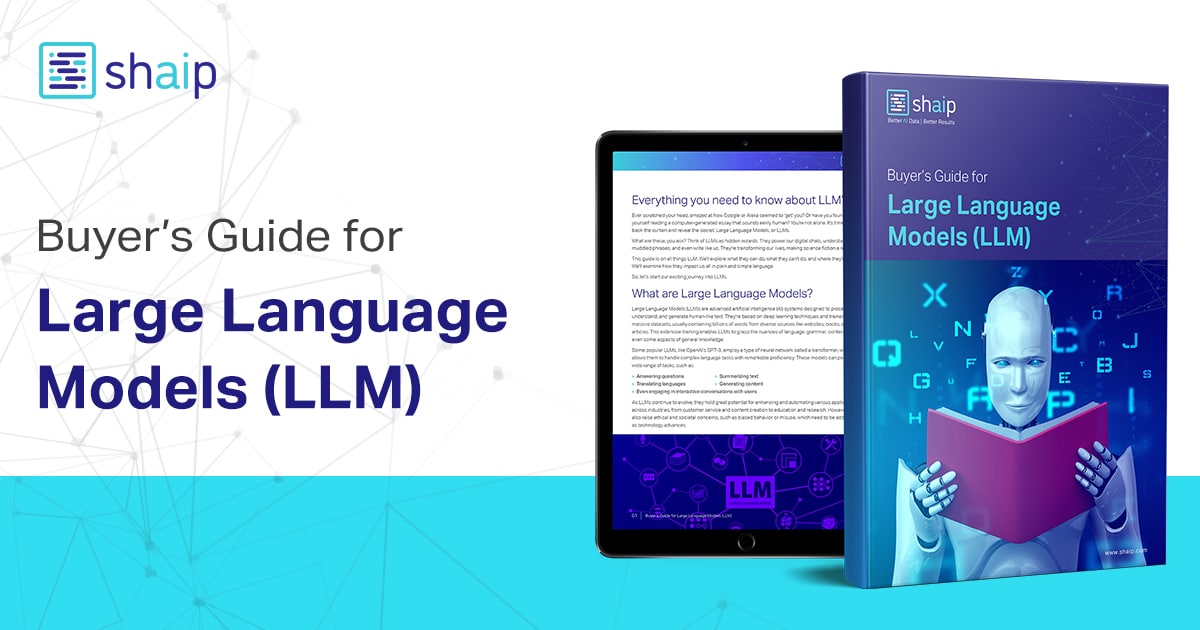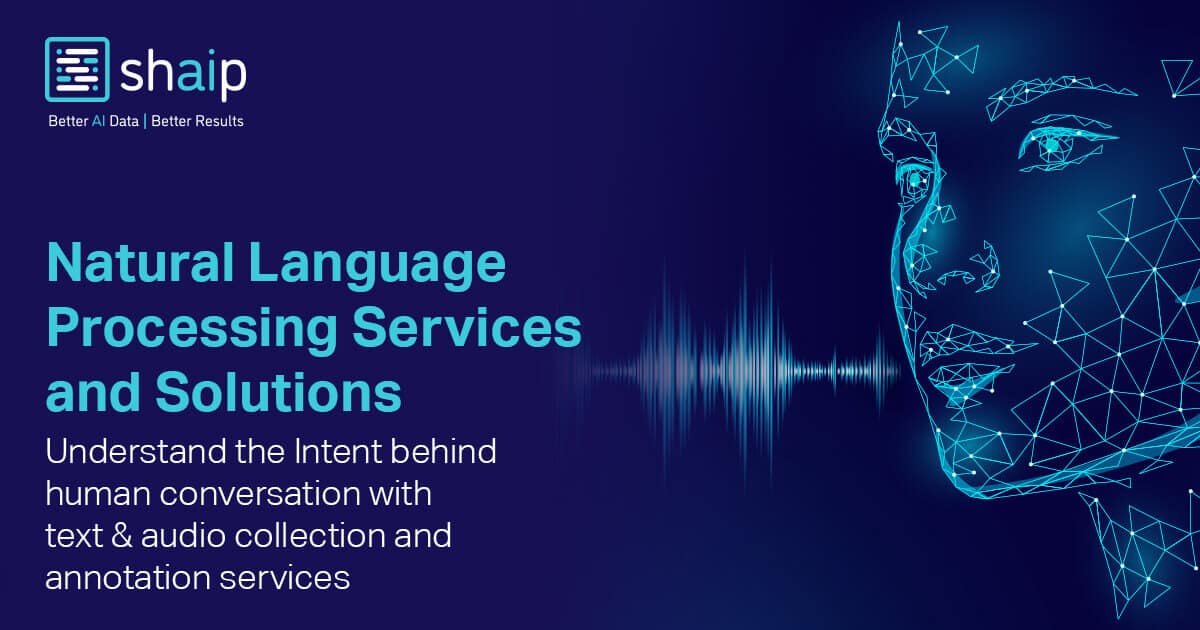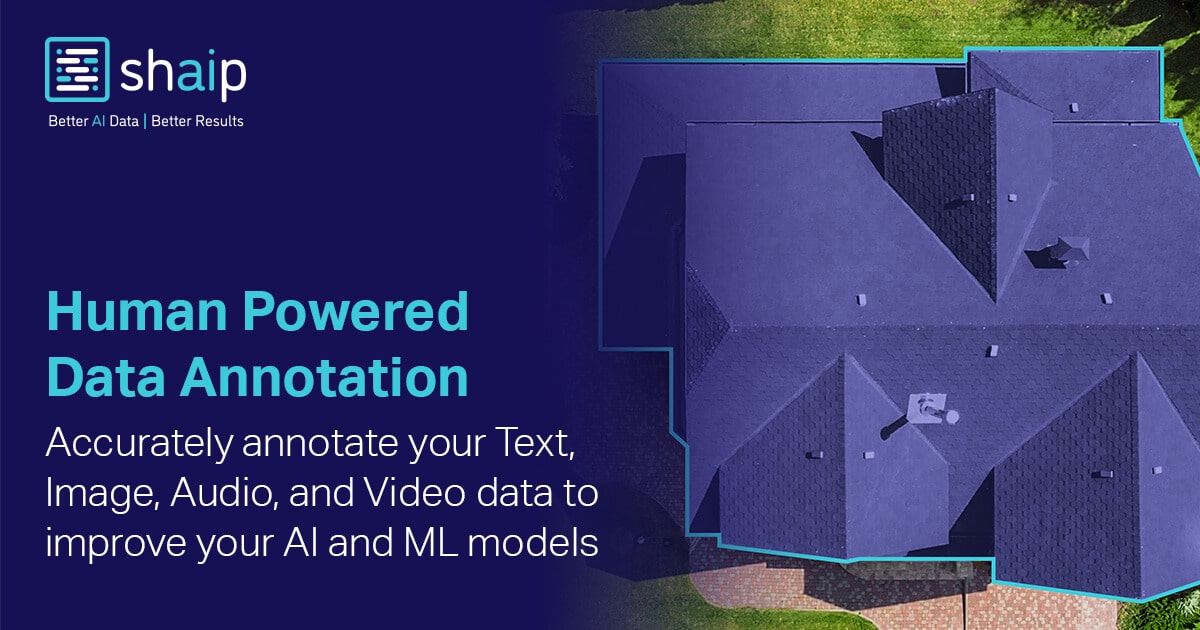Generative AI Training Data Solutions
Generative AI Services: Mastering Data to Unlock Unseen Insights
Harness the power of generative AI to transform complex data into actionable intelligence.
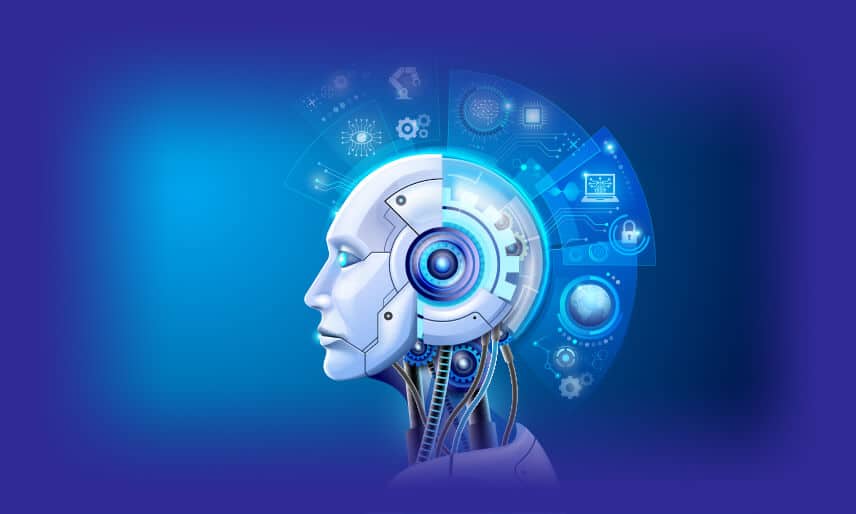
Featured Clients
Empowering teams to build world-leading AI products.

The progress in Generative AI technologies is ceaseless, bolstered by fresh data sources, meticulously curated training and testing datasets, and model refinement via reinforcement learning from human feedback (RLHF) procedures.
RLHF in generative AI leverages human insights, including domain-specific expertise, for behavioral optimization and accurate output generation. Fact-checking from domain experts ensures the model’s responses are not only contextually relevant but also trustworthy. Shaip provides accurate data labeling, credential domain experts, and evaluation services, enabling seamless integration of human intelligence into the iterative fine-tuning of Large Language Models.
Optimizing Gen AI Models with Curated Data & Human Feedback

Dataset
Generation
Utilize prompt generation with LLMs to augment existing datasets & improve model coverage on diverse topics, ensuring robust performance.
Data
Annotation
Engage subject matter experts to refine, and annotate unstructured data sources into structured formats suitable for ML algorithms.
Model Refinement with RLHF
Fine-tune AI models by integrating ongoing human review into model development through an iterative process of evaluation & refinement to optimize output.
Quality Output Assessment
Experts perform audit and quality control to validate and ratify the outputs of Generative AI systems.
Shaip offers Generative AI services tailored to advance your business solutions:
Data Collection for Fine-Tuning LLMs
We gather and curate data to refine language models for precision and accuracy.
Domain-Specific Text Creation
Our service creates specialized text for sectors like legal and medical to train your domain-focused AI.
Toxicity Assessment
Our approach uses flexible scales to measure and reduce toxic content in AI-generated communications accurately.
Model Validation & Tuning Services
We assess gen AI results for quality across markets and languages to fine-tune AI to align with market-specific needs through RLHF.
Prompt Creation/Fine-Tuning
We craft and optimize natural language prompts to mirror diverse user interactions with your AI.
Answer Quality Comparison
Our extensive network enables a thorough comparison of AI answers to enhance model accuracy and dependability.
Likert Scale Appropriateness
Our tailored feedback ensures that AI responses have the appropriate tone & brevity for specific user scenarios.
Correctness Evaluation
We rigorously evaluate AI-generated content to ensure it is factual and realistic to prevent the spread of misinformation.
Generative AI Use Cases
Question & Answering Pairs
Create Question-Answer pairs by thoroughly reading large documents (Product Manuals, Technical Docs, Online forums & Reviews, Industry Regulatory Documents) to enable companies to develop Gen AI by extracting the relevant info from a large corpus. Our experts create high-quality Q&A pairs such as:
» Q&A pairs with multiple answers
» Creation of surface level questions (Direct data extraction from reference Text)
» Create deep level questions (Correlate with facts & insights not given in reference text)
» Query Creation from Tables
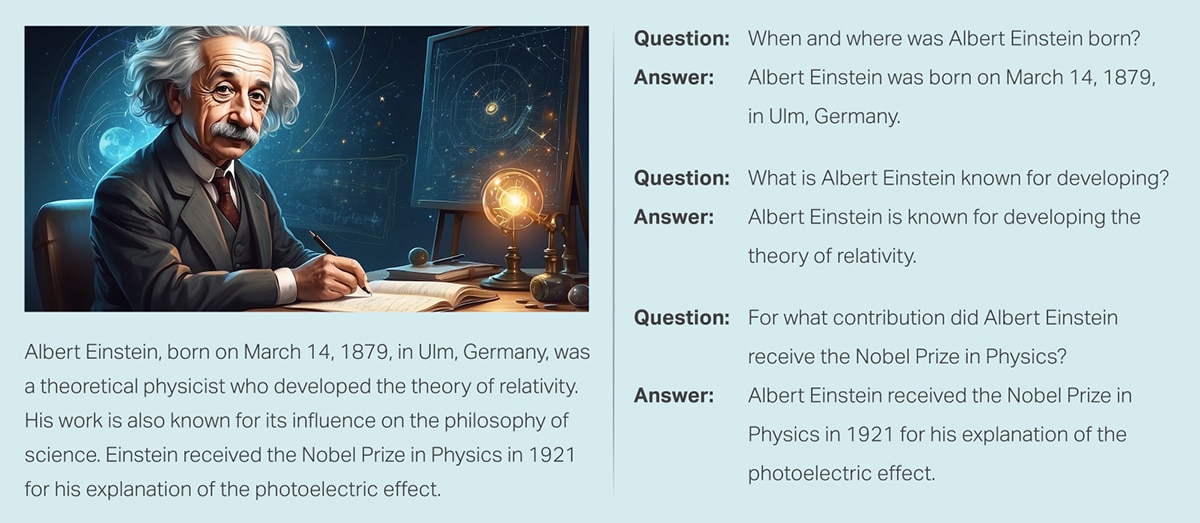
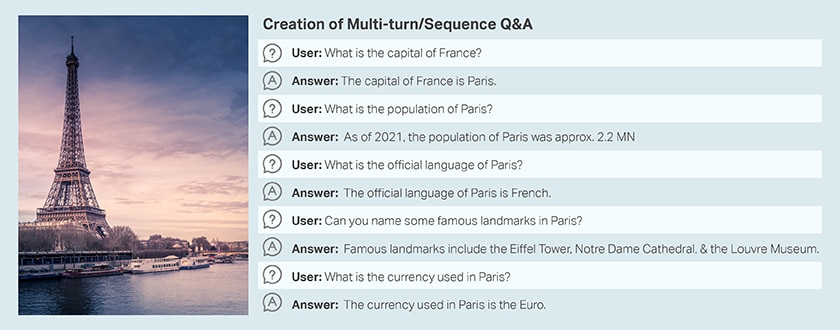
Text Summarization
Our experts can summarize the entire conversation or long dialogue by inputting concise and informative summaries of large volumes of text data.


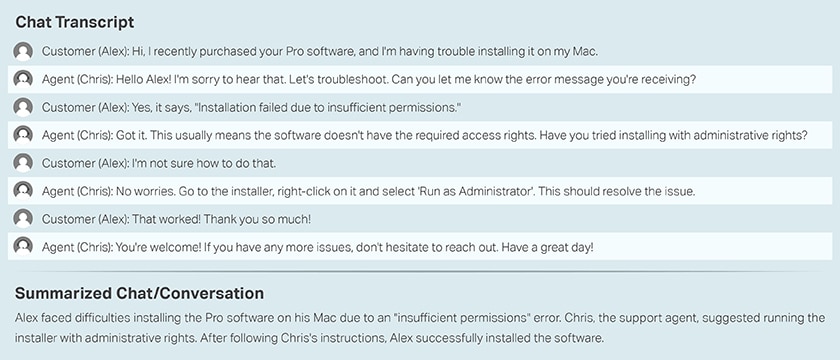
Image Captioning
Transform how you interpret images with our advanced AI-powered Image Captioning service. We breathe life into images by generating precise and contextually rich descriptions, opening up new ways for your audience to interact and engage with your visual content more effectively.

Audio Generation
Train models with a large dataset of audio recordings with various sounds, such as music, speech, and environmental sounds, to generate audio, such as music, podcasts, or audio books.
Caption
The main soundtrack of an arcade game. It is fast-paced and upbeat, with a catchy electric guitar riff. The music is repetitive and easy to remember, but with unexpected sounds, like cymbal crashes or drum rolls.
Generated audio

Speech Recognition
Train models that understand spoken language, i.e., applications, such as voice-activated assistants, dictation software, and real-time translation based on a large dataset of audio recordings of speech with corresponding transcripts.
Training Text-to-Speech Services
We offer a large dataset of audio recordings of human speech to train AI models to create natural, engaging voices for your applications, offering your users a unique and immersive auditory experience.
LLM Datasets Evaluation with Human Rating & QA Validation
In the world of machine learning, ensuring that a model understands and generates human-like text based on given prompts is paramount. This process involves rigorous dataset evaluation through human rating and quality assurance (QA) validation. Evaluators critically assess the prompt-response pairs in a dataset and rate the relevance and quality of the responses generated by a Language Learning Model (LLM).
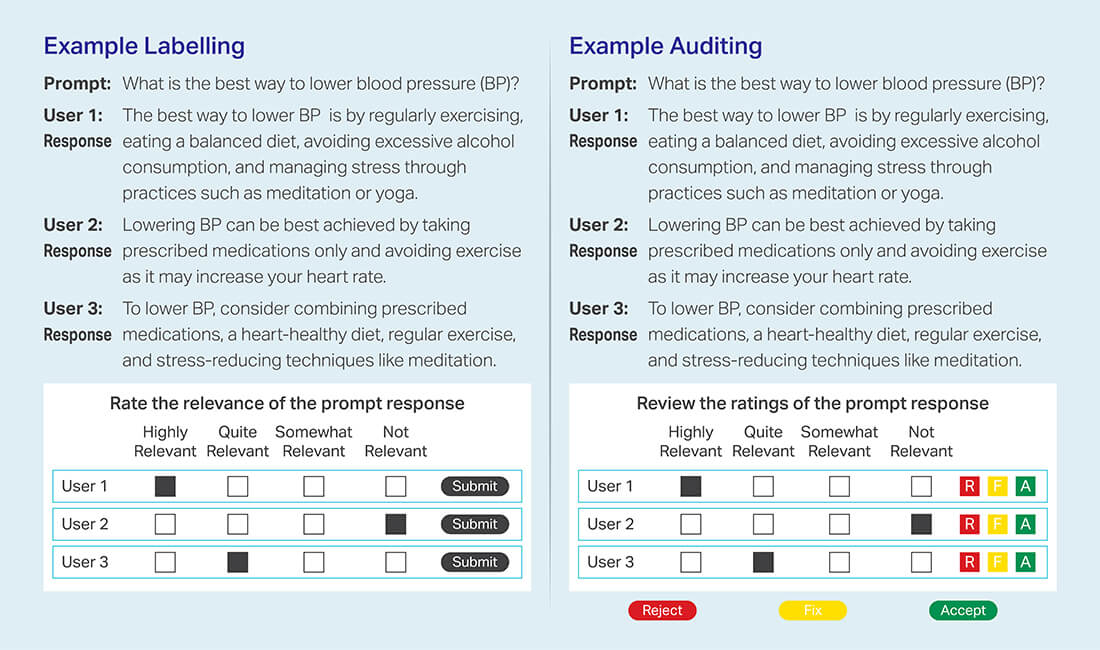
LLM Datasets Comparison with Human Rating & QA Validation
Dataset comparison involves meticulous analysis of various response options for a single prompt. The objective is to rank these responses from best to worst based on their relevance, accuracy, and alignment with the context of the prompt.
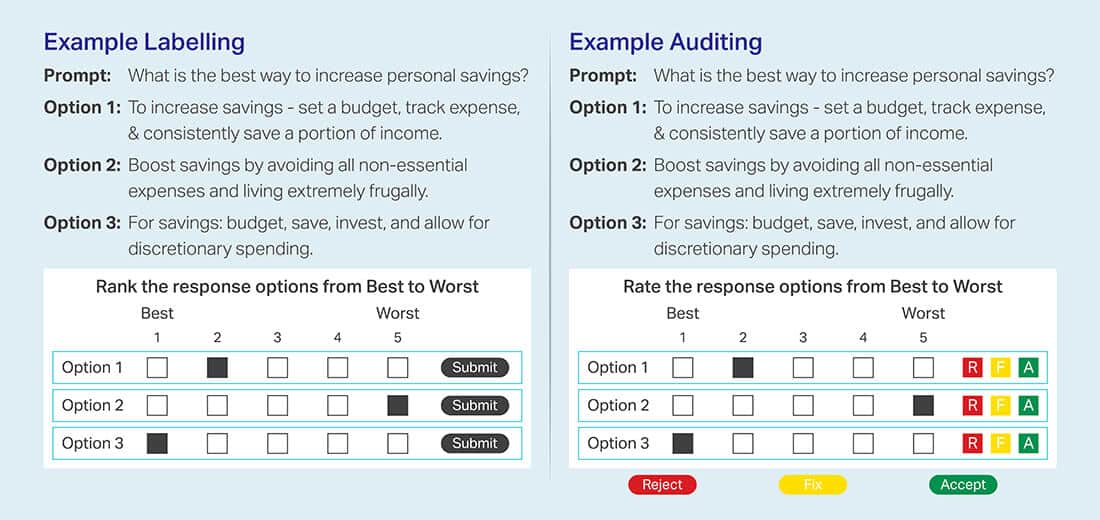
Synthetic Dialogue Creation
Synthetic Dialogue Creation harnesses the power of Generative AI to revolutionize chatbot interactions and call center conversations. By leveraging AI’s capacity to delve into extensive resources such as product manuals, technical documentation, and online discussions, chatbots are equipped to offer precise and relevant responses across a myriad of scenarios. This technology is transforming customer support by providing comprehensive assistance for product inquiries, troubleshooting issues, and engaging in natural, casual dialogues with users, thereby enhancing the overall customer experience.


Image Summarization, Rating & Validation
Image Summarization, Rating & Validation within the realm of Generative AI involves sophisticated machine learning models that curate and assess images, generating accurate summaries and quality ratings. Human feedback is crucial in this process as it helps to fine-tune the AI’s accuracy, ensuring the generated content meets the nuanced expectations and standards that only human judgment can provide, thereby enhancing the reliability of AI outputs.

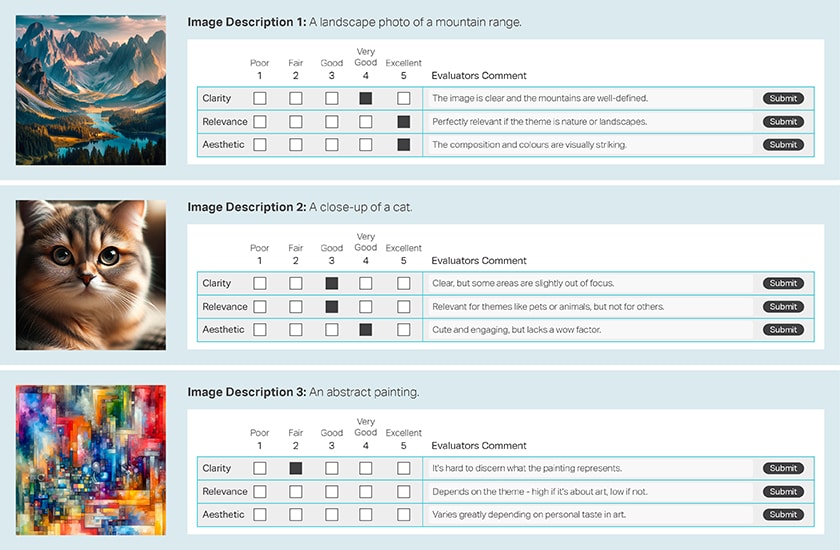
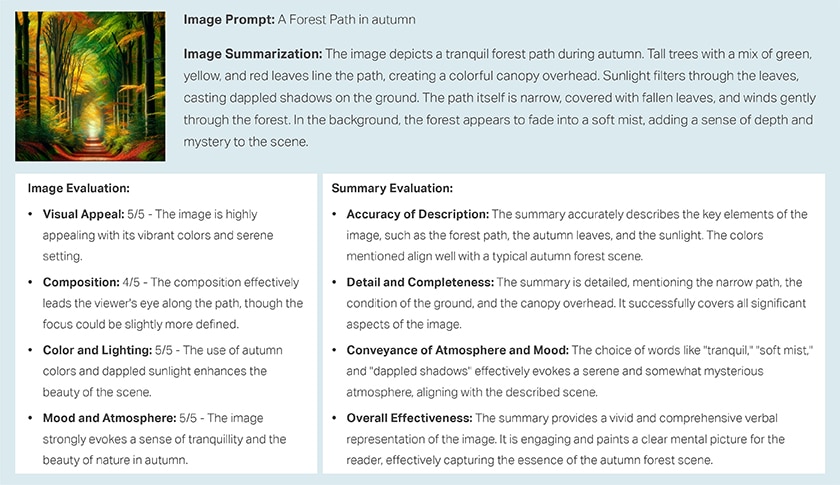
Shaip offers a clear advantage in the world of Generative AI
Powering AI with Precision Data
Leveraging decades of data experience, we empower Generative AI to its fullest. Our leadership in data solutions enables us to merge varied datasets for robust, secure applications. With our skills, AI gets accurate data while maintaining strict security and privacy. We're the perfect partner for businesses looking to leverage Generative AI.
Assets, Programs, & Investments
We are dedicated to the potential of Generative AI to enhance efficiency, improve results, & add value for our clients. Our investment in intellectual property, staff training, and Generative AI tools aims to increase productivity, modernize applications, and accelerate software development.
Extensive Industry Expertise
We collaborate with top healthcare and technology brands, using our deep knowledge to develop Generative AI applications, such as uncovering data insights, creating buyer profiles, testing models, and introducing digital agents for staff and customers.
Technology Development Expertise
Technology is at our core, and with Generative AI, we take our leading software engineering to new heights. We partner with diverse industries to tap into this cutting-edge tech, accelerating software creation, enhancing services for users and workers, and streamlining operations.
Recommended Resources
Buyer’s Guide
Buyer’s Guide: Large Language Models LLM
Ever scratched your head, amazed at how Google or Alexa seemed to ‘get’ you? Or have you found yourself reading a computer-generated essay that sounds eerily human? You’re not alone.
Solutions
Natural Language Processing Services and Solutions
Human intelligence to transform Natural Language Processing (NLP) into high-quality training data for machine learning with text and audio annotation.
Offering
Expert Data Annotation / Data Labeling Services For Machines By Humans
AI feeds on copious amounts of data & leverages machine learning (ML), deep learning (DL) & natural language processing (NLP) to continually learn & evolve.
Build Excellence in your Generative AI with quality datasets from Shaip
Frequently Asked Questions (FAQ)
Generative AI refers to a subset of artificial intelligence focused on creating new content, often resembling or imitating given data.
Generative AI operates through algorithms like Generative Adversarial Networks (GANs), where two neural networks (a generator and a discriminator) compete and collaborate to produce synthetic data resembling the original.
Examples include creating art, music, and realistic images, generating human-like text, designing 3D objects, and simulating voice or video content.
Generative AI models can utilize various data types, including images, text, audio, video, and numerical data.
Training data provides the foundation for generative AI. The model learns the patterns, structures, and nuances from this data to produce new, similar content.
Ensuring accuracy involves using diverse and high-quality training data, refining model architectures, continuous validation against real-world data, and leveraging expert feedback.
The quality is influenced by the volume and diversity of training data, the complexity of the model, computational resources, and the fine-tuning of model parameters.
